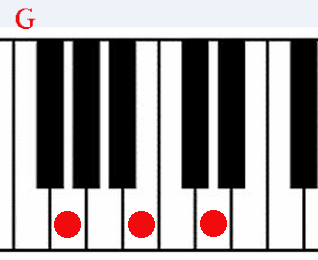
Soft chords are often played as shorter triads and separate notes. A block chord is played with three or four notes all at the same time. A cut or broken chord is usually two notes played at the same time. A harp or arpeggio is notes of a chord played one after the other.

Many accompanists on piano and electronic keyboards play shorter chords and separate notes so as not to muffle the voice or melody of the lead singer or other musician. Short chords with staccato notes are often heard in jazz. Many musicians play keyboard instruments which have poor volume control. When they lower the volume of their chords, the notes of their melody are too quiet to be heard. Many keyboard instruments have some octaves much louder than others.
Play full block chords during pauses in the melody and short cut chords or single notes during the melody.
Repeat one soft rhythm throughout a piece of music with another soft rhythm to fill in the pauses here and there. Pauses are found at the end of lines and verses of lyrics, when a singer or musician playing a wind instrument pauses to take a breath.
Soft rhythms can sometimes be played during sustained notes in a melody.
Here are some examples of soft rhythms to play with the left hand. These are in 4/4 time. Think of each one as being four even notes in the bar but with one or two of those notes being played shorter or longer. The first beat can be a triad or a cut chord played for a 1/8th duration. A silence fills in for the first beat.




Here the lowest note is held down for a count of four and the middle note is played as 1/8th notes with 1/8th pauses.

Here the lowest note is held down for four beats while the higher note is played as a 1/4.

Practise playing one rhythm as you change from one chord to the next. Then keep playing that way with the left hand while playing the root note of each chord with the right hand. Follow the fingering positions on the drawings. Here are more rhythms to play:










.
Those soft rhythms help when keyboard registrations play deep chord notes much louder than high melody notes.
With these next rhythms, hold two full notes down for a count of four beats while playing the middle note of the triad. Follow the fingering numbers.






Play these four rhythms like a harp, one note after the other. Start with the first note played with the little finger and leave that finger anchored over the key while you play the other notes for three more beats. Harp or arpeggio notes are often played by the left hand in classical piano music.




Next start with the middle note of the triad and anchor that finger while you rock your wrist from thumb to little finger playing the rest of each measure.
Again, think of four even quarter notes to the measure in 4/4 time. Then change one or two of those notes into shorter or longer notes to make a rhythm.
With these four soft chords, play the first beat as a 1/8th triad. Then anchor over the upper and lower notes of the triad while you play the middle note to finish each measure.





.